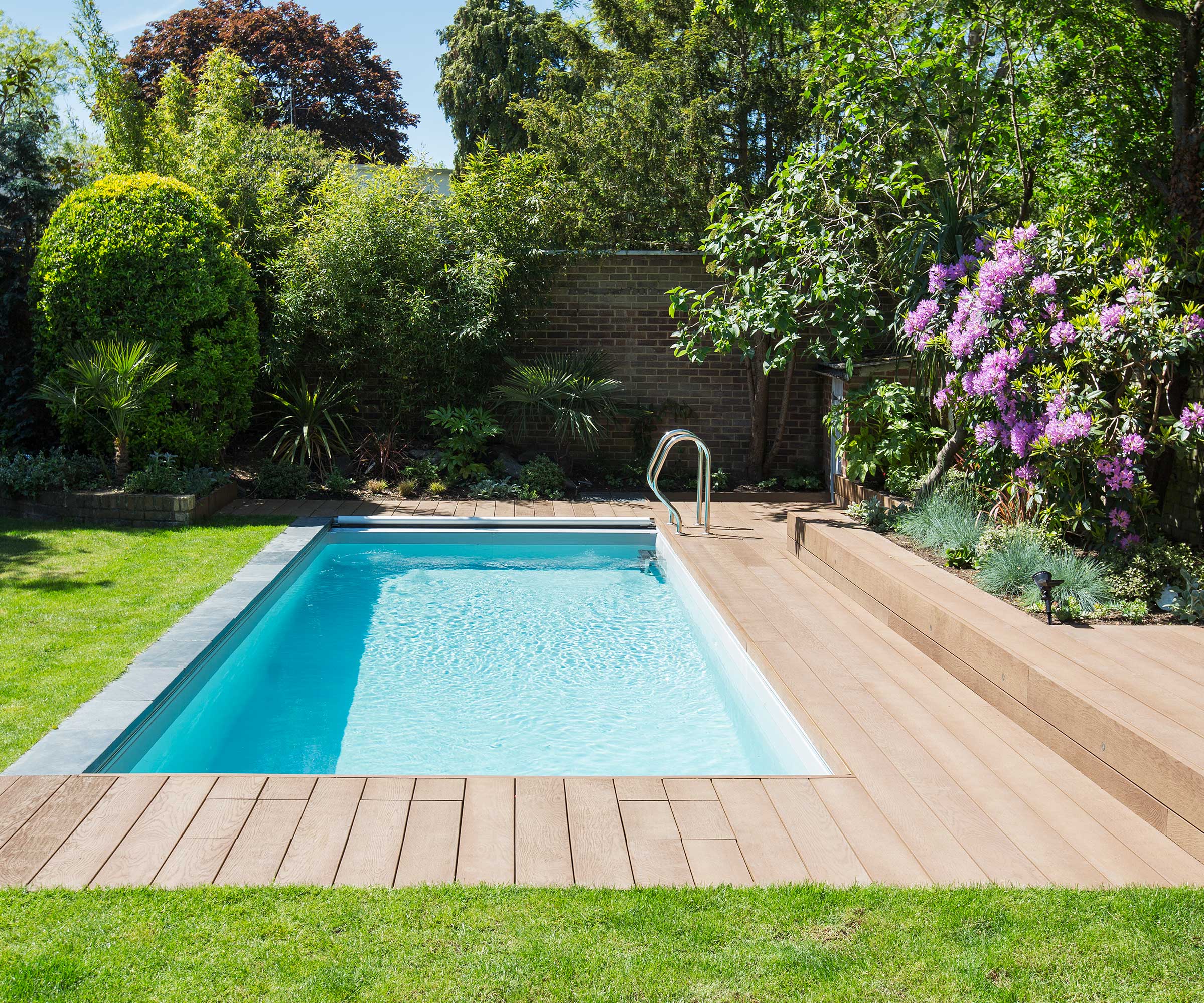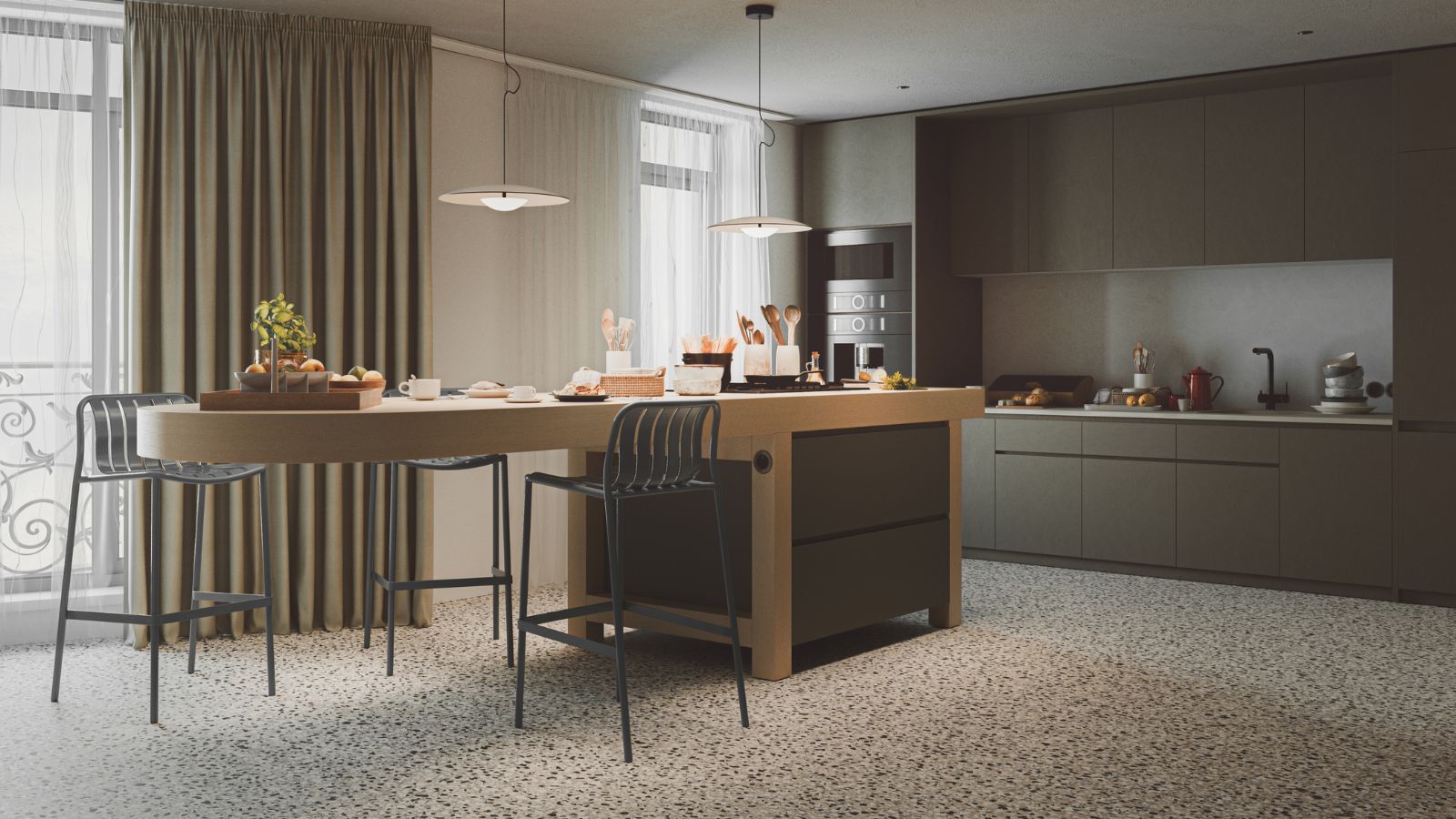How soon after shocking a pool can I swim in it? Essential rules for safe bathing
Don’t jump straight into the pool after shocking it. This is what you need to know


You’ve sanitized your swimming pool by shocking it and, with the water is looking oh-so inviting, it’s tempting to start using it again right away. But getting in too soon isn’t good for you, and it’s vital to know how soon you can swim safely.
Shocking a pool is when you give it a chlorine treatment, and sanitize the water, getting rid of chloramines, contaminants, and visible algae. But it raises free chlorine to high levels – and they aren’t levels you should swim in. However appealing your pool ideas have made your swimming spot, patience is required.
Here, we give the expert view on how long you should wait after shocking a pool before you get back in, and the reasons why.
The rules on getting back into the pool after shocking it
You’ll no doubt be aware that shocking it raises the level of free chlorine to do the job of sanitizing it. But you can’t get straight back in afterwards.
‘After shocking a pool, waiting until the free chlorine levels drop back to the range of 1 to 3 parts per million (ppm) before swimming is recommended,’ says Hubert Miles, certified pool and spa inspector through NACHI. ‘This typically takes about 24 to 48 hours, depending on factors such as the amount of shock used, water temperature, and circulation.’
These are the reasons why you need to bide your time.
Why you should wait
You shouldn’t get into the pool too soon after shocking it because the level of free chlorine can be too high. ‘When you shock a pool using a traditional chlorine shock treatment, it can temporarily increase free chlorine levels, depending on the product and the initial pool conditions,’ explains Hubert Miles. ‘The free chlorine levels can rise to around 10 to 15 ppm after shocking. Following the manufacturer’s instructions and performing water testing is crucial to ensure the levels return to normal before allowing swimmers back into the pool.’
The risks of getting into the pool when chlorine levels are this high include skin irritation or unpleasant skin symptoms or flare-ups of existing skin conditions.
It can affect your eyes, too, potentially causing irritation, pain and blurring. There are also respiratory issues. A swimmer who gets into the water too soon can suffer from symptoms such as coughing, breathlessness and wheezing.
In other words, getting into the pool over hastily can cause problems that range from unpleasant to very serious.
How soon can you get back in?
In terms of time, you should wait around 24 to 48 hours. That’s a rule of thumb, though.
‘The waiting period after shocking a pool can be influenced by the quantity of shock used,’ explains Hubert Miles. ‘To make a more exact calculation, you can determine your pool’s chlorine demand by conducting a chlorine demand test. This test measures the amount of chlorine needed to reach and maintain the desired free chlorine level. By knowing the chlorine demand, you can estimate the time for the chlorine levels to return to an acceptable range after shocking. A chlorine demand test is not something a pool owner or pool supply store will often do. If you know the amount of water in the pool, you can use a bucket test to estimate the chlorine demand. Here’s how:
1. Take 1 gallon of water and add around 1/8th teaspoon of 6 per cent bleach (adjust quantities if using more water).
2. Stir and let it sit for a few minutes.
3. Test the chlorine level; if it’s below 10 ppm, repeat steps 1 and 2.
4. Keep adding bleach and testing until you consistently achieve 10 ppm.
‘This test helps you determine the amount of bleach needed to reach and maintain 10 ppm in your pool. Once you maintain 10 ppm, multiply the chlorine amount by the water volume in your pool.’
Test before you dive back in
As we’ve mentioned, what you’re looking for is a chlorine level of a least 1 ppm but better between 2 and 4 ppm before anyone gets back into the pool. It’s also important the pH of the water is correct and this should be between 7 and 7.6.
Always test the water to make sure this is the case before using the pool again.
FAQs
When can you shock a pool?
You can shock your pool during the day, but it isn’t the best strategy. That’s because when you’re shocking the pool you are doing so to raise the free chlorine level. UV rays break down chlorine, which is why experts recommending shocking a pool at night instead.
However, if there’s been an incident (urine, feces, vomit) that causes contamination in the pool then you are going to want to shock it straightaway to sanitize the water rather than wait around.
In terms of reducing the time you have to wait before you can swim again, it’s best not to shock the pool during the day. ‘Shocking the pool in the evening is recommended,’ says Hubert Miles, certified pool and spa inspector through NACHI. ‘Shocking at this time allows the chlorine to work without the interference of sunlight, which can degrade chlorine and reduce its effectiveness. Additionally, shocking in the evening provides more time for the pool to recover and ensures that the chlorine levels are back to normal by the following day, allowing swimmers to enjoy the pool with minimal waiting time.’
Is it safe to swim in a cloudy pool after shocking?
It is safe to swim in a cloudy pool after shocking, but only if a couple of conditions are satisfied. When you fix a cloudy pool you need to achieve a free chlorine level of at least 1 ppm but ideally in the range 2 to 4 ppm. The pH of the water, meanwhile, should be between 7 and 7.6. Ascertain that both of these factors are fulfilled before thinking of swimming.
Additionally, though, the pool should no longer be cloudy. With the right chlorine level, correct pool chemistry, the filter system effective, and algae growth tackled, if the water is still cloudy, there may be particles in there.
In this case, use a pool clarifier or flocculant according to manufacturer’s instructions before swimming.
A cloudy pool takes a little time to clear, so you’ll need to hold yourself back from swimming until it is.
If you go into a pool that's just been shocked, you may breathe in chlorine vapor, which can result in pulmonary difficulties. You may also suffer some skin irritation. If you feel well, shower and get some fresh air. If you don't, seek medical help.
Sign up to the Homes & Gardens newsletter
Design expertise in your inbox – from inspiring decorating ideas and beautiful celebrity homes to practical gardening advice and shopping round-ups.

Sarah is a freelance journalist and editor. Previously executive editor of Ideal Home, she’s specialized in interiors, property and gardens for over 20 years, and covers interior design, house design, gardens, and cleaning and organizing a home for Homes & Gardens. She’s written for websites, including Houzz, Channel 4’s flagship website, 4Homes, and Future’s T3; national newspapers, including The Guardian; and magazines including Future’s Country Homes & Interiors, Homebuilding & Renovating, Period Living, and Style at Home, as well as House Beautiful, Good Homes, Grand Designs, Homes & Antiques, LandLove and The English Home among others. It’s no big surprise that she likes to put what she writes about into practice, and is a serial house renovator.
-
 How to clean a terrazzo floor in 5 steps – expert tips to scrub, shine, and seal this sparkling floor finish
How to clean a terrazzo floor in 5 steps – expert tips to scrub, shine, and seal this sparkling floor finishAvoid damage and protect it's shine with these expert tricks
By Chiana Dickson Published
-
 The 11 British interior design styles you are going to want to bring into your home – no matter which side of the pond you live on
The 11 British interior design styles you are going to want to bring into your home – no matter which side of the pond you live onInterior designers share their favorite British design trends and how to recreate them in your own home
By Pippa Blenkinsop Published